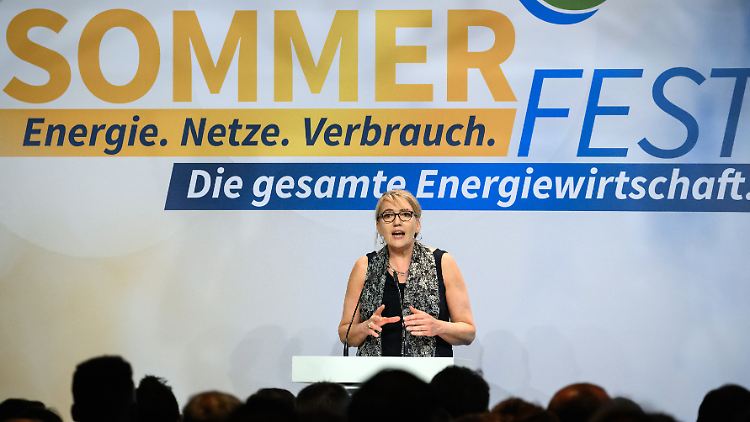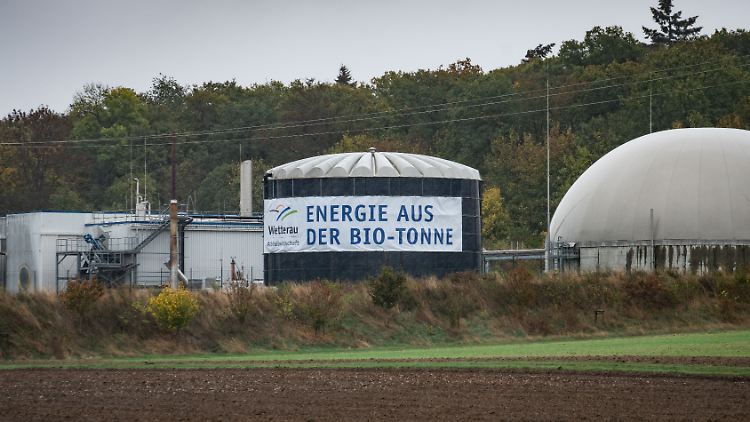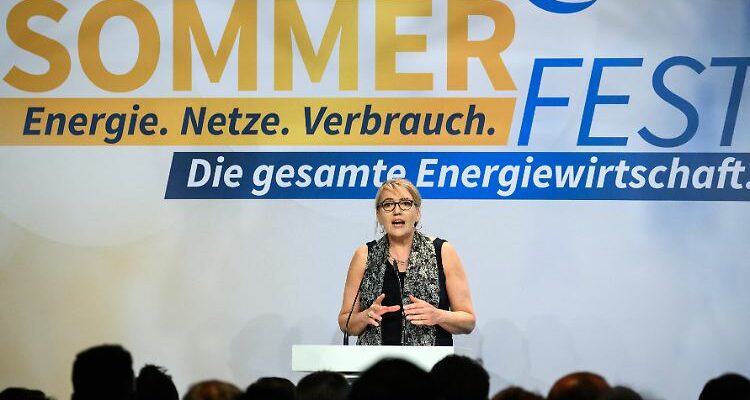Wind, solar, geothermal, hydropower and biomass are the five renewable energies. Biogas in particular has not yet played a major role in the federal government’s plans, although cities like Trier would like to rely heavily on it as a reserve for the winter. A mistake, says Simone Peter in the ntv “climate laboratory”. The former Green Party leader rejects the accusation of competition for land for food cultivation. Instead, it defends biogas as a “real alternative” to natural gas: It comes from Germany, provides farmers with a new source of income and is an all-purpose energy weapon that can be used for electricity, heat and as a green fuel. Peter promises: “Put us on an equal footing and we will show the competition that we are faster, better and tens of times cheaper.” However, German organic waste has so far mainly ended up in Denmark.
ntv.de: The biggest accusation made against biomass is that if it is used on a large scale as an energy source, there will be a lack of arable land for food. They are still committed to it. Why?

Simone Peter was Green Party leader from 2013 to 2018. She has been President of the Federal Renewable Energy Association since March 2018.
(Photo: picture alliance/dpa)
Simone Peter: The debate as to whether renewable raw materials require the same space as food was already being discussed intensively a decade ago. That’s not true, we use different areas for energy crops, fodder crops or crops for human consumption.
The corn that we like to eat as corn on the cob or popcorn is planted in different areas than the energy corn that later becomes biogas?
Yes. Simply because the food standards for humans are generally higher than for other forms of consumption. In fact, areas are being freed up because corn is often added to animal feed. But meat consumption is decreasing. Fewer animals on pasture require less feed. We also have a large reservoir of residual and waste materials. Denmark uses biogas to replace around 30 percent of its natural gas consumption. The Danes also import German waste from organic waste bins, manure, agricultural residues or straw. We could just as easily use them ourselves.
Renewable energies are energy sources that occur naturally or grow again. There are five in total: solar energy, wind power, geothermal energy, hydropower and biomass obtained from renewable raw materials. In addition to timber construction, this primarily includes the production of biogas: energy crops, but also plant or biological waste, green waste or residues can be broken down by bacteria in biogas plants. This fermentation process produces gases such as methane, which can then be used to generate electricity and heat.
And the Federal Environment Agency and the Federal Government didn’t understand that?
We are relaunching the debate about competition for space against the backdrop of the Russian attack on Ukraine. This led to a fossil fuel cost and supply crisis because we had to break away from our one-sided dependence on Russian natural gas. This also caused prices to go up. Now it is diversifying and some fracked gas is being imported from the USA. Biogas would have a stronger resilience and environmental factor because it comes from Germany. It is also more environmentally friendly because it does not come from overseas, but from our farmers. They were previously promised that they would be able to earn money from electricity, heat and fuel in the future. “The farmer as an energy and raw material farmer” was once a popular saying…
Is there enough biogas available that it would be more than a drop in the ocean?
Yes, in Germany there are around 10,000 biogas plants well distributed on farms, which can create much-needed flexibility by storing the gas and using it when needed. We are using more and more solar and wind energy, sometimes they are there and sometimes they are not. If I don’t have a source that compensates for that, I’ll have a problem. At the same time, wind and sun complement each other wonderfully: when the sun shines, there is little wind and vice versa. The more we use, the smaller the compensation windows become. That’s why we don’t need a large power plant park. The federal government has also recognized this. The number of new gas power plants that will later run on hydrogen is falling Power plant strategy significantly smaller than originally planned.
Bioenergy would be our reserve instead of the new gas power plants?
Bioenergy from cultivated biomass, residual and waste materials is a real alternative. And if it is not needed in the electricity sector, heat can be generated instead in so-called combined heat and power systems and vice versa. Last year there were major discussions about the heating law: many municipalities are now planning climate-friendly heating networks so that citizens do not have to replace their heating systems themselves. Particularly in rural areas, bioenergy plays a major role alongside solar thermal energy and large heat pumps. Availability can be controlled with Save.
It sounds like there is no problem at all.


In purely mathematical terms, the existing biogas plants can replace 11 percent of German natural gas consumption.
(Photo: picture alliance/dpa)
When it comes to the question of whether we have enough bioenergy, yes. Politically it looks different. A good two years after the announcement, the biomass strategy is finally being discussed, but progress is only fragmentary. There is actually a disagreement with the government on this issue: bioenergy offers sustainable and domestic potential for security of supply. Unlike gas power plants, where nobody knows when they will be approved, who will build them and to what extent they will have to be subsidized. This is our offer: put us on an equal footing with the gas power plant operators and we will show the competition that we are faster, better and tens of times cheaper with a regional, renewable back-up.
Eye level when it comes to funding? The Trier municipal utilities will have 100 percent renewable electricity supply in just two years, will then build up their reserves and flexibilities and rely on bioenergy, among other things. If this is already being planned, why does it need to be promoted?
That’s right, renewable energies are becoming increasingly cheaper. But Trier also says that funding is necessary to expand the heating network and support people in switching over to their heating system. These are huge sums and municipalities are already bearing large costs for social benefits, infrastructure, road construction and digitalization. Incentives are needed if you want to continue digging and don’t want to leave the municipalities out in the cold. But these are profitable. The Trier municipal utilities are also building one Biomethanation plant. For this they need biogas. Farmers produce this more cheaply than conventional energy, but if they are to continue doing this in the next few years, they need incentives for this too.
You said that bioenergy could also be used as a green fuel.
That’s correct. In this area, biofuels have the greatest decarbonization effect. The Federal Environment Agency has just presented new figures: Last year, 10.5 million tons of CO2 were saved in the transport sector through biofuels. Through electromobility, there were 5 million tons because many charging stations run on green electricity and people who buy an electric car also have a photovoltaic system on their roof. It is clear that electromobility will be the core of the transport transition with growing green electricity in the network. But we have a large fleet of vehicles and a certain fleet that is difficult to electrify: agricultural and forestry machines, various construction equipment. Biofuel can be used for this.
Natural gas used to be the bridging technology to move away from coal and oil. In the transport sector it is now bioenergy?
Biofuels are one way to organize the drive transition and ramp up electromobility. And the best thing is: they come from the local market. We can control sustainability and generate value until the electrification gap is closed.
Clara Pfeffer and Christian Herrmann spoke to Simone Peter. The conversation has been shortened and smoothed for better clarity. You can watch the entire conversation in the podcast “Climate Laboratory” listen.
What really helps against climate change? Climate laboratory is the ntv podcast in which Clara Pfeffer and Christian Herrmann put ideas, solutions and claims through their paces. Is Germany an electricity beggar? Is the energy transition destroying industry and jobs? Why do so many people expect their economic decline? Why are always the green fault? Are sea eagles really more important than wind turbines? Can nuclear power save us?
The ntv climate laboratory: half an hour every Thursday that informs, has fun and cleans up. At ntv and everywhere there are podcasts: RTL+, Amazon Music, Apple Podcasts, SpotifyRSS feed
You have questions for us? Write an email to [email protected] or contact Clara Pfeffer and Christian Herrmann.
